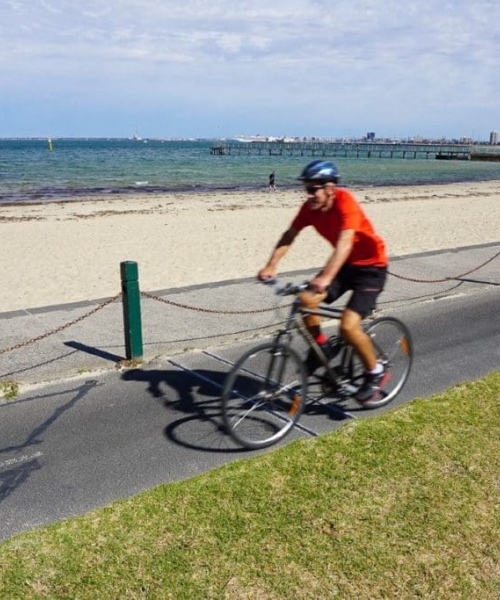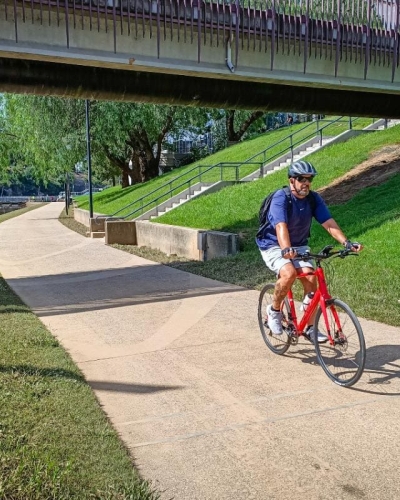As cities become more congested and polluted, micromobility offers a sustainable and efficient way to get around. MetroCount, the leading provider of traffic data solutions, is playing a key role in the micromobility revolution. MetroCount's RidePod® BT and RidePod® BP counters are designed to accurately monitor bicycle, scooter and pedestrian traffic.
The pneumatic tubes in the RidePod® BT provide a straightforward method for detecting vehicle passages. These tubes are always on the surface of the path and generate a signal when compressed by passing vehicles. This method is particularly effective for counting bicycles and scooters, as their wheels exert sufficient pressure to activate the tubes.
In contrast, the RidePod® BP leverages piezoelectric strips. These strips convert pressure into electrical signals, providing improved sensitivity and enabling the device to accurately classify vehicles as bicycles, scooters, or pedestrians. Additionally, piezoelectric strips are less susceptible to environmental factors like temperature and humidity, ensuring reliable performance in various conditions.

How MetroCount® Data Drives Micromobility Initiatives in Parramatta
MetroCount's micromobility data is used by a variety of stakeholders to plan, design, and operate micromobility infrastructure. This data can be used to inform a wide range of micromobility initiatives, including:
Infrastructure planning: MetroCount® data can help to identify areas where micromobility infrastructure is needed, such as bike lanes and scooter parking.
Safety planning: MetroCount® data can be used to identify areas where micromobility users are most vulnerable to accidents, so that safety measures can be implemented.
Demand forecasting: MetroCount ® data can be used to forecast the demand for micromobility services, so that operators can plan accordingly.
Policy development: MetroCount® data can be used to inform the development of micromobility-friendly policies, such as subsidies for micromobility purchases or tax breaks for businesses that offer micromobility benefits to their employees.
The City of Parramatta has placed a new draft plan for public feedback, aiming to create a more interconnected bike network. This plan is built upon data and insights provided by MetroCount®. Since 2017, the city has invested $53 million in bike infrastructure improvements and path upgrades based on the data and recommendations from the previous bike plan developed in 2017.
The council's vision is to make cycling an appealing transportation choice for a wide range of residents, from ages eight to 88. This vision is underpinned by data insights and aims to increase the share of bike trips to work from 2% to 5% by 2043 and from 6% to 10% within the Parramatta CBD. A specific example of MetroCount® data in action is the planned upgrade to the Wigram Street Cycleway. The data collected from this cycleway, including usage patterns and the absence of objections during a trial period, supports the decision to convert it into a permanent cycleway. Additionally, MetroCount® data has been instrumental in determining the need to widen the cycleway from 2.4 meters to 3 meters.
This data-driven approach is a significant part of the city's commitment to investing $135 million in new bike paths and infrastructure, and MetroCount data plays a role in shaping the design and decision-making processes. The city is actively seeking input from the community, further emphasising its data-driven commitment to enhancing micromobility in Parramatta.
ATLYST®: Micromobility Data Insights
The RidePod® BP and RidePod® BT counters are both equipped with sensors that detect the passage of bicycles, scooters, and pedestrians. These sensors send data to a cabinet, which then transmits the data to MetroCount's ATLYST cloud-based platform.
ATLYST® processes the data from the RidePod® BP and RidePod® BT counters and provides a variety of ways to visualise, analyse, and share the data. This data can be used to:
• Track bicycle, scooter, and pedestrian traffic patterns
• Identify areas of high bicycle, scooter, and pedestrian traffic
• Measure the impact of transportation projects on bicycle, scooter, and pedestrian traffic
• Plan for future bicycle, scooter, and pedestrian infrastructure
ATLYST® is a valuable tool for transportation professionals who are working to improve the safety and efficiency of the transportation system for all users. Contact MetroCount® today to learn more about how our products can help you achieve your goals.


Got a great MetroCount story? Share it with us and let the world know the great work you're doing in your community.


